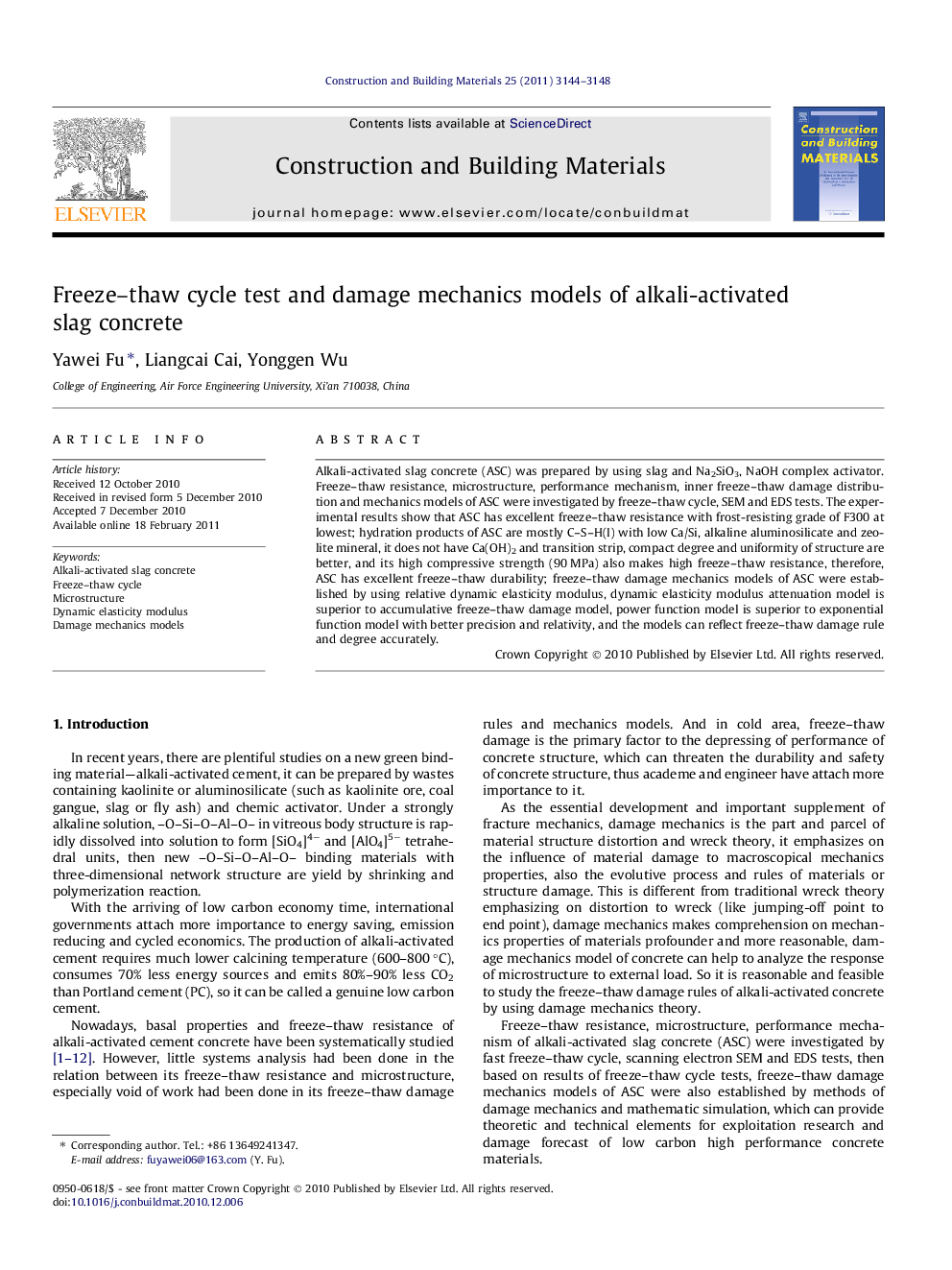| Article ID | Journal | Published Year | Pages | File Type |
|---|---|---|---|---|
| 259248 | Construction and Building Materials | 2011 | 5 Pages |
Alkali-activated slag concrete (ASC) was prepared by using slag and Na2SiO3, NaOH complex activator. Freeze–thaw resistance, microstructure, performance mechanism, inner freeze–thaw damage distribution and mechanics models of ASC were investigated by freeze–thaw cycle, SEM and EDS tests. The experimental results show that ASC has excellent freeze–thaw resistance with frost-resisting grade of F300 at lowest; hydration products of ASC are mostly C–S–H(I) with low Ca/Si, alkaline aluminosilicate and zeolite mineral, it does not have Ca(OH)2 and transition strip, compact degree and uniformity of structure are better, and its high compressive strength (90 MPa) also makes high freeze–thaw resistance, therefore, ASC has excellent freeze–thaw durability; freeze–thaw damage mechanics models of ASC were established by using relative dynamic elasticity modulus, dynamic elasticity modulus attenuation model is superior to accumulative freeze–thaw damage model, power function model is superior to exponential function model with better precision and relativity, and the models can reflect freeze–thaw damage rule and degree accurately.
Research highlights► We study freeze–thaw resistance,microstructure and performance mechanism of ASC. ► We establish two freeze–thaw damage mechanics models of ASC. ► Dynamic elasticity modulus attenuation model is superior to accumulativ damage model. ► Power function model is superior to exponential function model.
